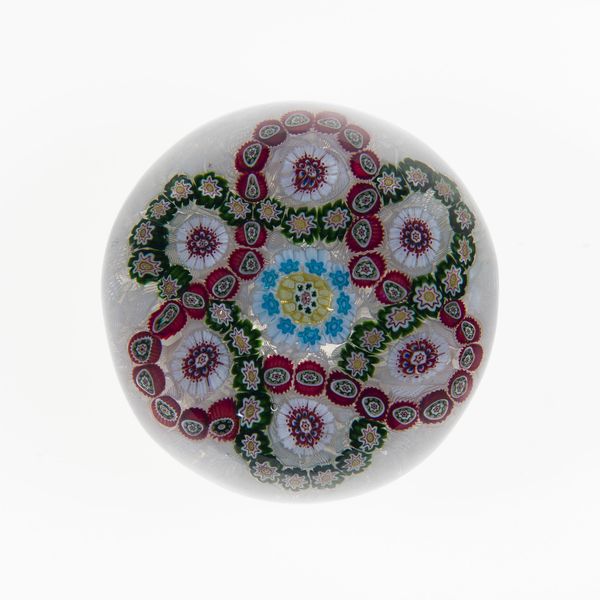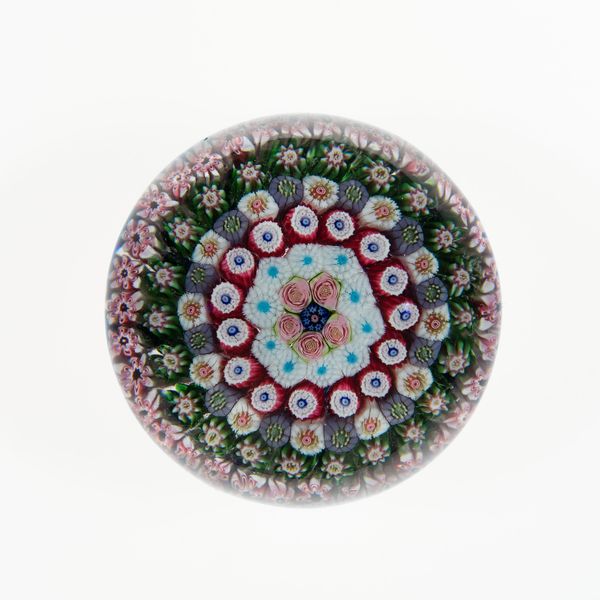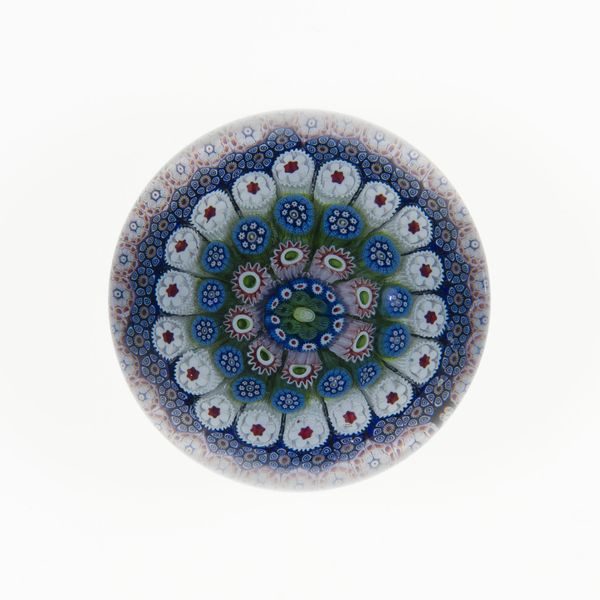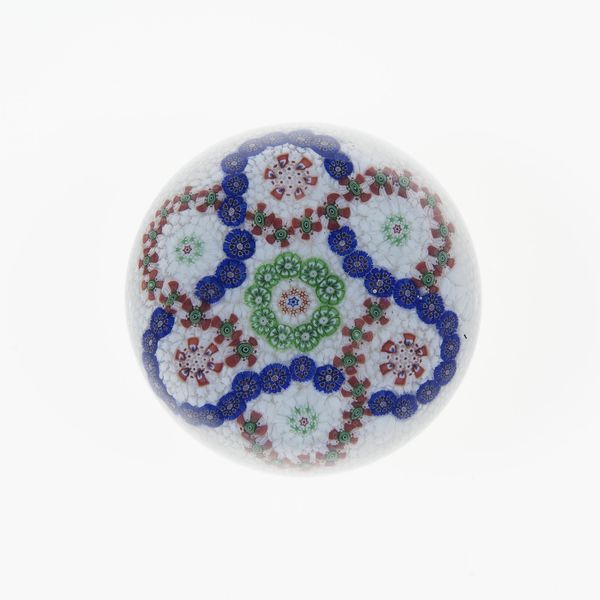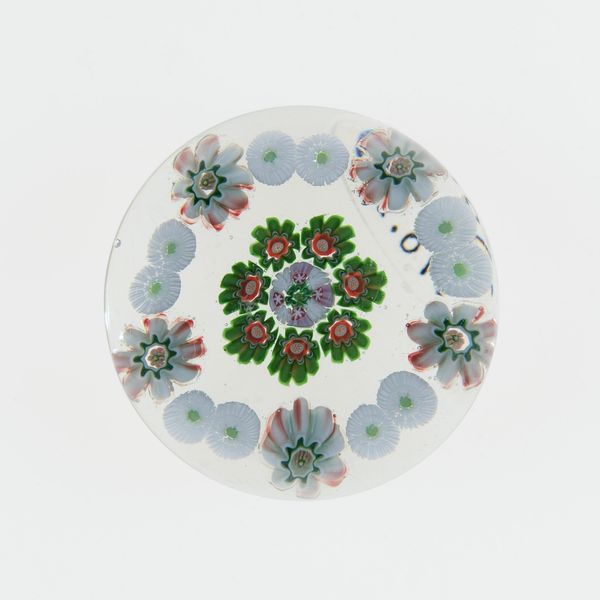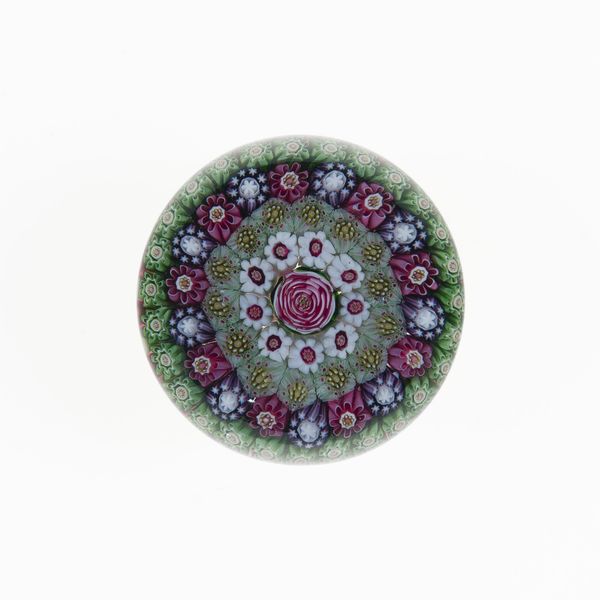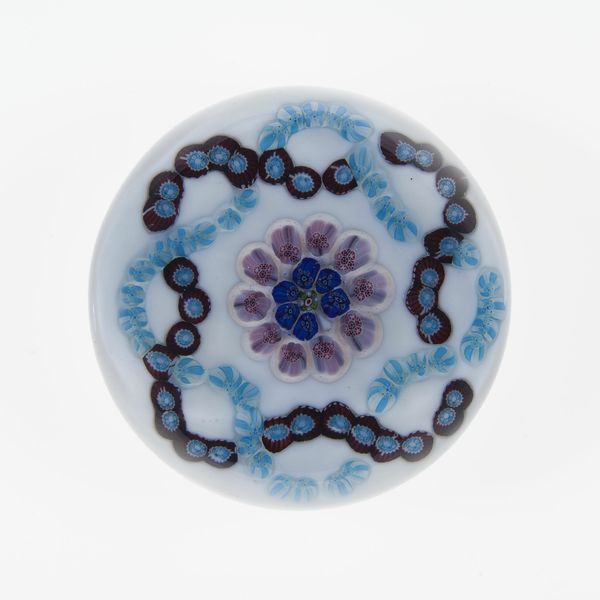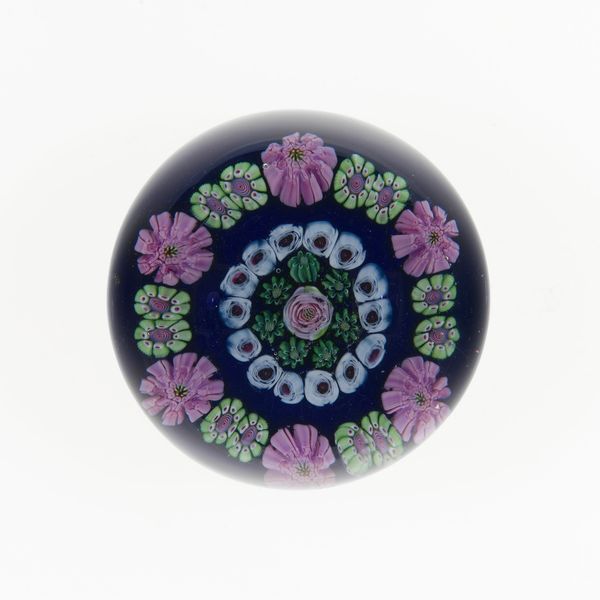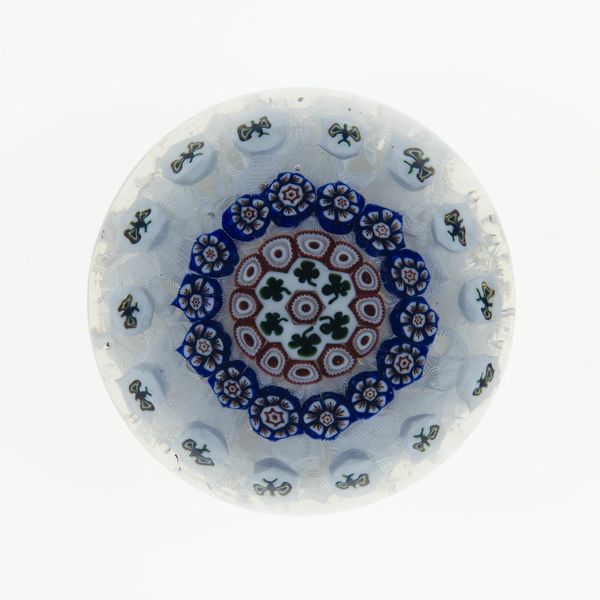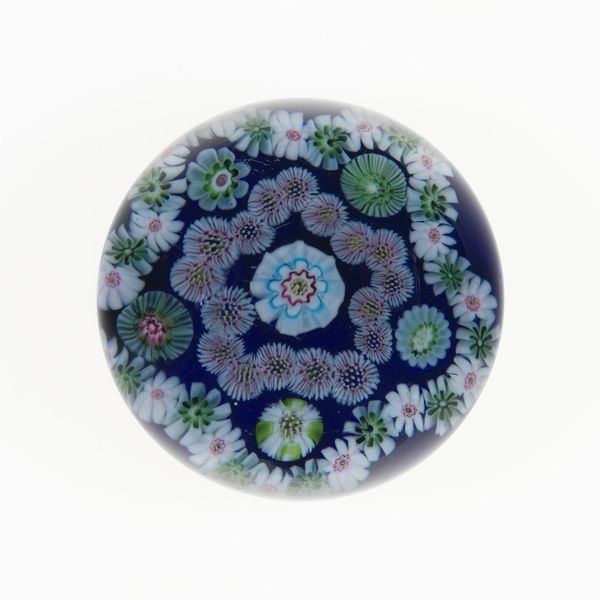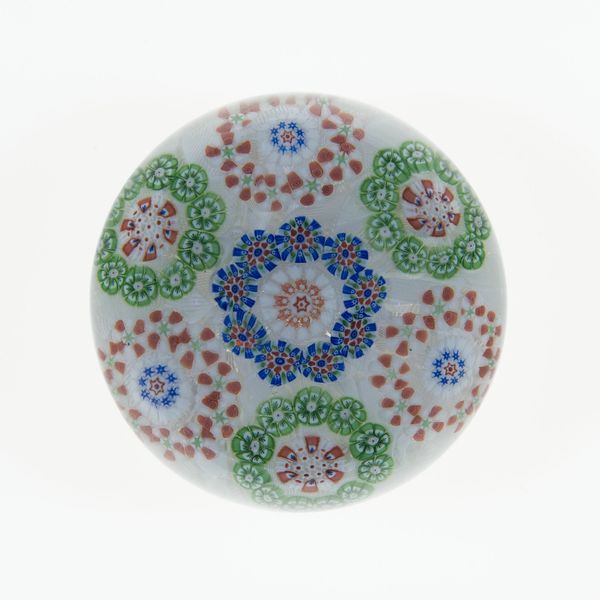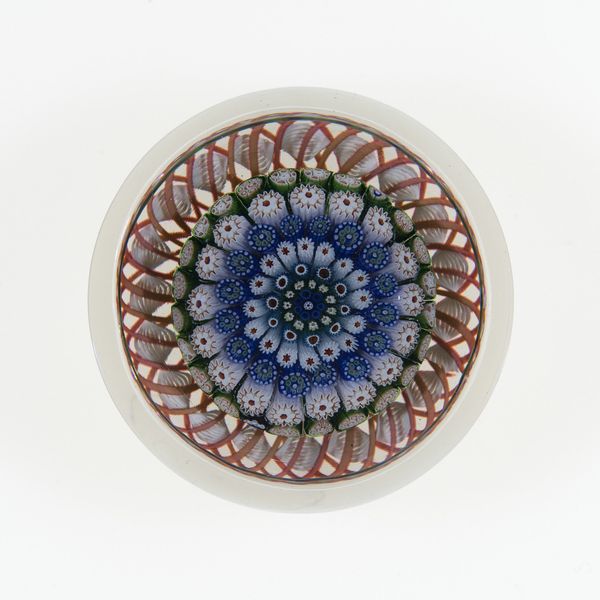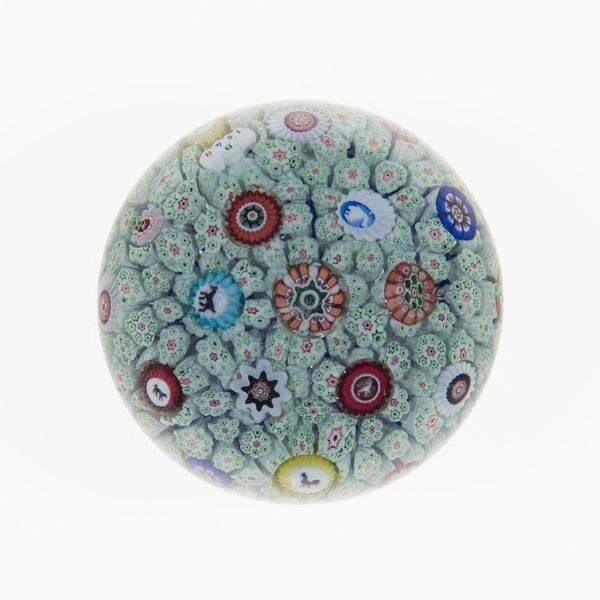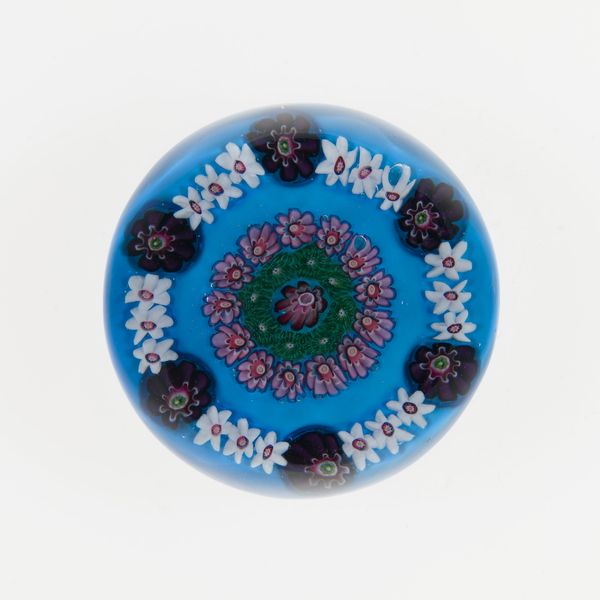
glass, sculpture
#
glass
#
ancient-mediterranean
#
sculpture
#
decorative-art
Dimensions: Diam. 8.3 cm (3 1/4 in.)
Copyright: Public Domain
Editor: Here we have "Paperweight," crafted around the 1840s by Baccarat Glassworks. It’s made of glass, and the patterns inside are so intricate; it's quite dazzling. What social narratives do you think a piece like this engages? Curator: Well, this paperweight, seemingly a decorative object, exists within a complex matrix of power, labor, and cultural exchange. Think about the glass itself. Its production depended on exploited labor in mines and factories. The intricate design, a 'thousand-flower' motif, borrows heavily from global artistic traditions, particularly Islamic art, which brings up questions of appropriation and cultural dominance during the height of European colonialism. How does seeing this as an act of "borrowing" change your view? Editor: I never considered the raw materials needing to be mined. So it wasn’t just a beautiful thing appearing out of nowhere, it came at the cost of, most likely, exploitation. Also, appropriating global art, it makes it feel less unique now, I suppose. Do you think the original owners of such pieces ever considered this history? Curator: That's the critical question, isn't it? Who had access to this object, and what did it symbolize for them? Was it a symbol of refined taste, a quiet acknowledgment of global power structures, or perhaps simply an object of beauty divorced from its production? Objects carry encoded meanings, sometimes visible, sometimes obscured. Editor: That makes me rethink the concept of art objects. I’m not just looking at what’s there, but at what had to happen to *make* what's there, if that makes sense? Curator: Precisely. Analyzing these encoded histories lets us challenge the narratives of beauty and progress often presented without critique in art history. The act of seeing differently *is* resistance.
Comments
No comments
Be the first to comment and join the conversation on the ultimate creative platform.
